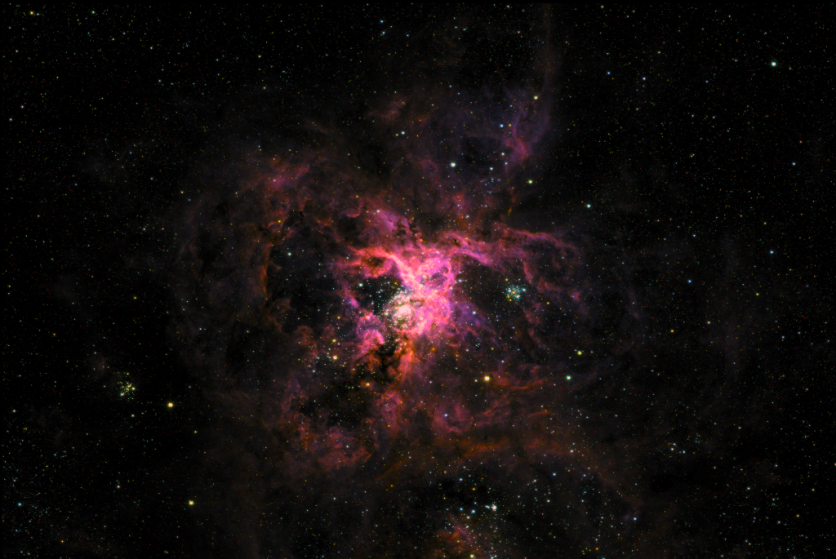NASA's latest scientific endeavor has captured the breathtaking beauty of the Tarantula Nebula and Antennae Galaxies like never before.
The Super Pressure Balloon Imaging Telescope (SuperBIT) was launched on a super pressure balloon from Wānaka, New Zealand, on April 16, 2023, soaring to a staggering altitude of 108,000 feet above the Earth's surface.

But what makes SuperBIT unique is that it offers a cost-effective alternative to space telescopes. Unlike launching a large telescope on a rocket, SuperBIT's super-pressure balloon can circumnavigate the globe for up to 100 days to obtain scientific data.
It also floats at an altitude above most of Earth's atmosphere, which makes it ideal for various astronomical observations and missions.
Comparable to Hubble
SuperBIT's advanced telescope can capture breathtaking images of galaxies in the visible-to-near ultraviolet light spectrum, which is comparable to the Hubble Space Telescope's range but with a much wider field of view, according to NASA.
The primary objective of the telescope is to chart the mysterious dark matter that envelops galaxy clusters by observing the way these enormous objects warp the fabric of space, known as "gravitational lensing." Thanks to SuperBIT's remarkable imaging abilities, scientists have been granted an unprecedented view of the Tarantula Nebula.
This vast, star-forming region of ionized hydrogen gas is situated 161,000 light-years away in the Large Magellanic Cloud, and its swirling clouds of gas and dust can now be seen in exquisite detail.
The bright, newborn stars in the region appear to be surrounded by turbulent gas and dust clouds, providing a fascinating insight into the processes that drive star formation.
Meanwhile, the Antennae galaxies, which are two large galaxies colliding 60 million light-years away towards the southerly constellation Corvus, have been captured by multiple space telescopes before.
However, SuperBIT's composite images taken during this flight offer a unique perspective that has never been seen before.
Read Also : [UPDATE] Dead NASA Satellite to Crash Into Earth! Should You Be Worried? Here are RHESSI's Re-Entry Details
Unraveling the Mysteries of Dark Matter
The SuperBIT project is an exciting international collaboration between NASA, Durham University, the University of Toronto, and Princeton University.
Their mission? To unravel one of the universe's most enigmatic mysteries: dark matter. Despite its imperceptibility, dark matter pervades the cosmos and has a profound impact on the formation of galaxies.
With SuperBIT's cutting-edge technology, the team plans to map dark matter by analyzing the way it distorts the light passing through it.
By observing the behavior of dark matter during collisions, they hope to learn if its particles are capable of bouncing off each other, spreading out, or chipping away.
This crucial information could lead to groundbreaking discoveries about the origins and composition of this elusive substance.
But the most exciting part about SuperBIT? It cost only about £4.1 million/$5 million USD, almost 1,000 times less than an equivalent satellite. And because helium is less expensive than rocket fuel, the team can make adjustments to the telescope's design over several test flights and continually upgrade its capabilities.
Throughout its three-month journey, SuperBIT will soar through the southern hemisphere, capturing stunning images of the night sky while recharging its batteries with solar panels during the day.
Related Article : NASA Successfully Launches 'Football-Stadium-Sized' Super Pressure Balloon From New Zealand

![Apple Watch Series 10 [GPS 42mm]](https://d.techtimes.com/en/full/453899/apple-watch-series-10-gps-42mm.jpg?w=184&h=103&f=9fb3c2ea2db928c663d1d2eadbcb3e52)



